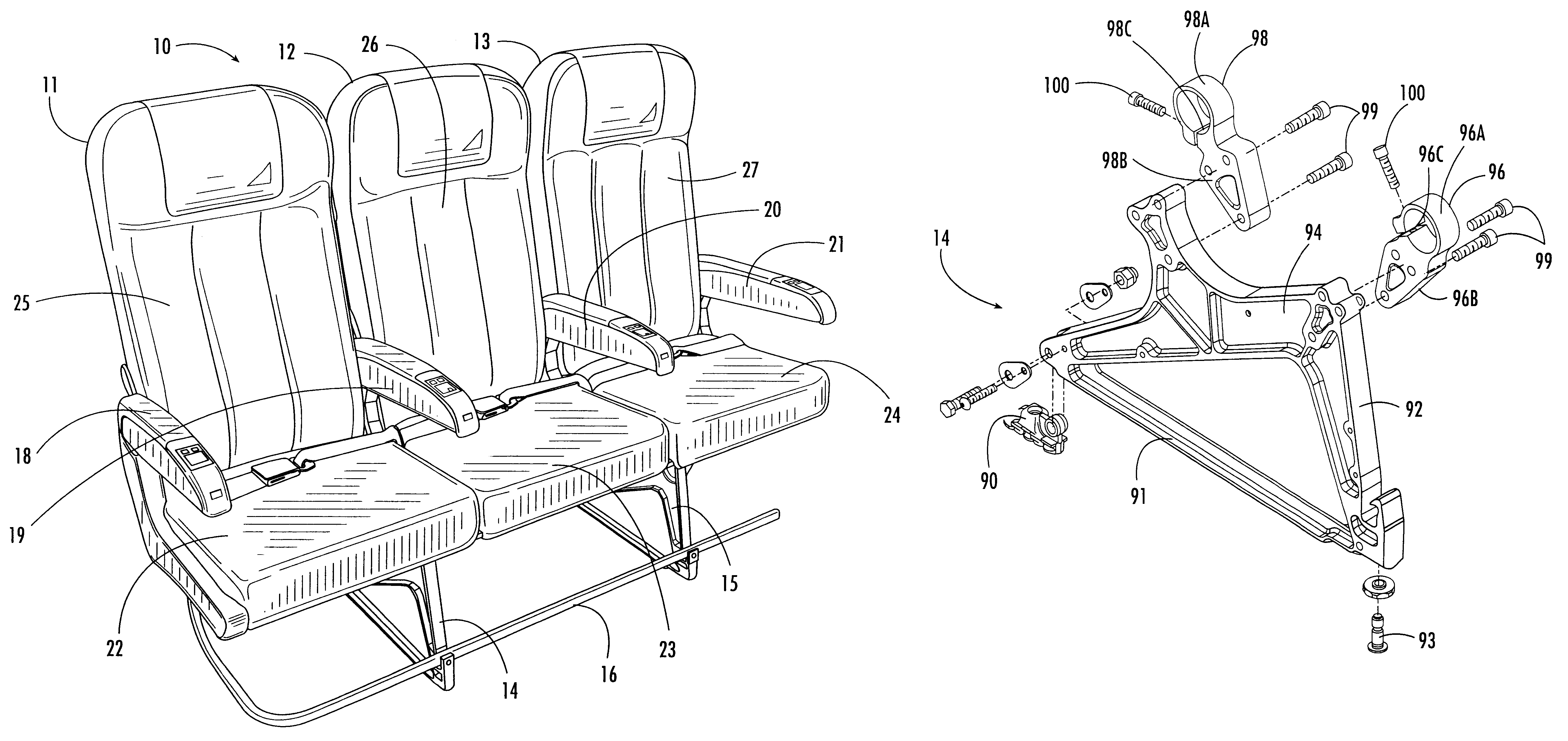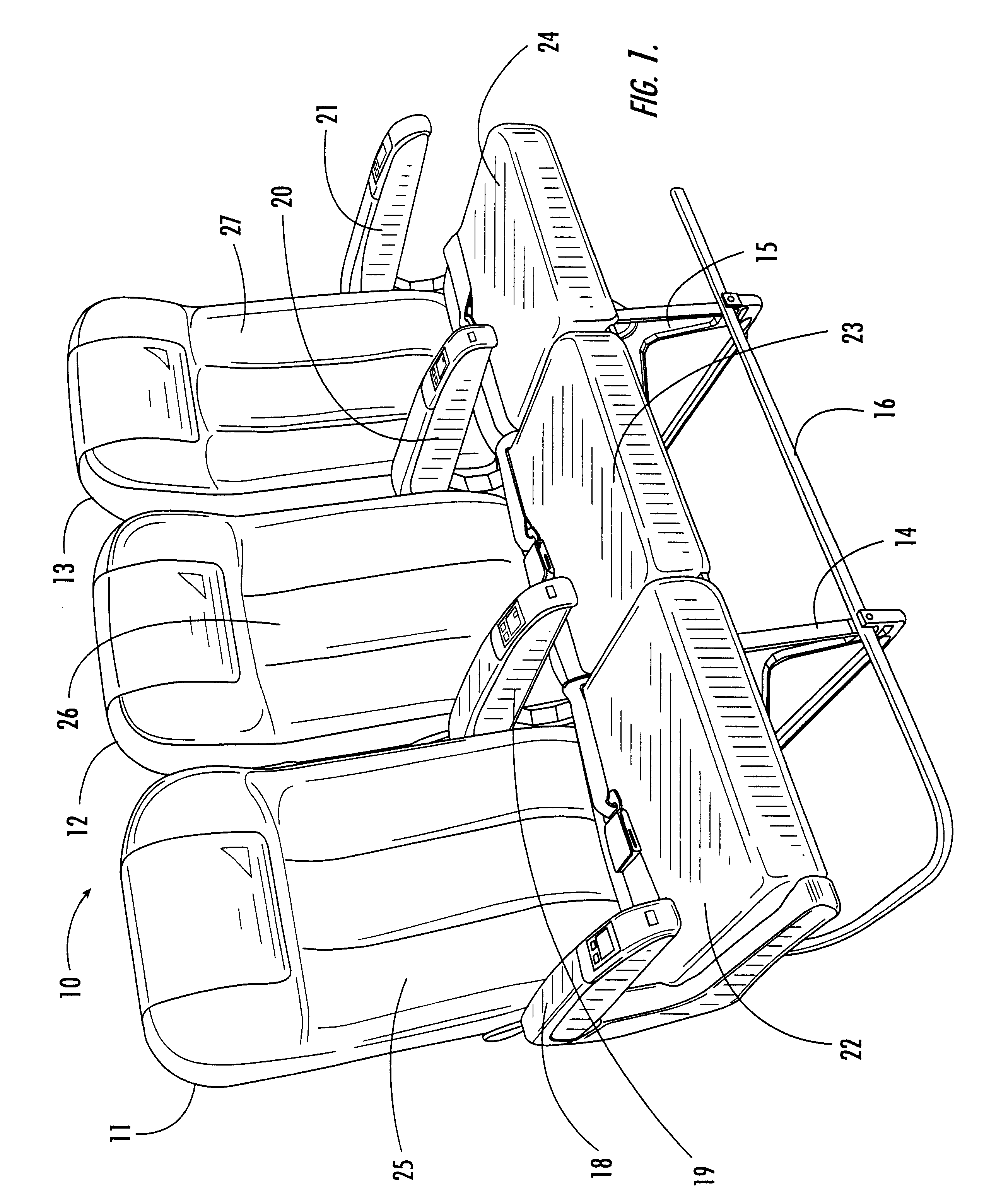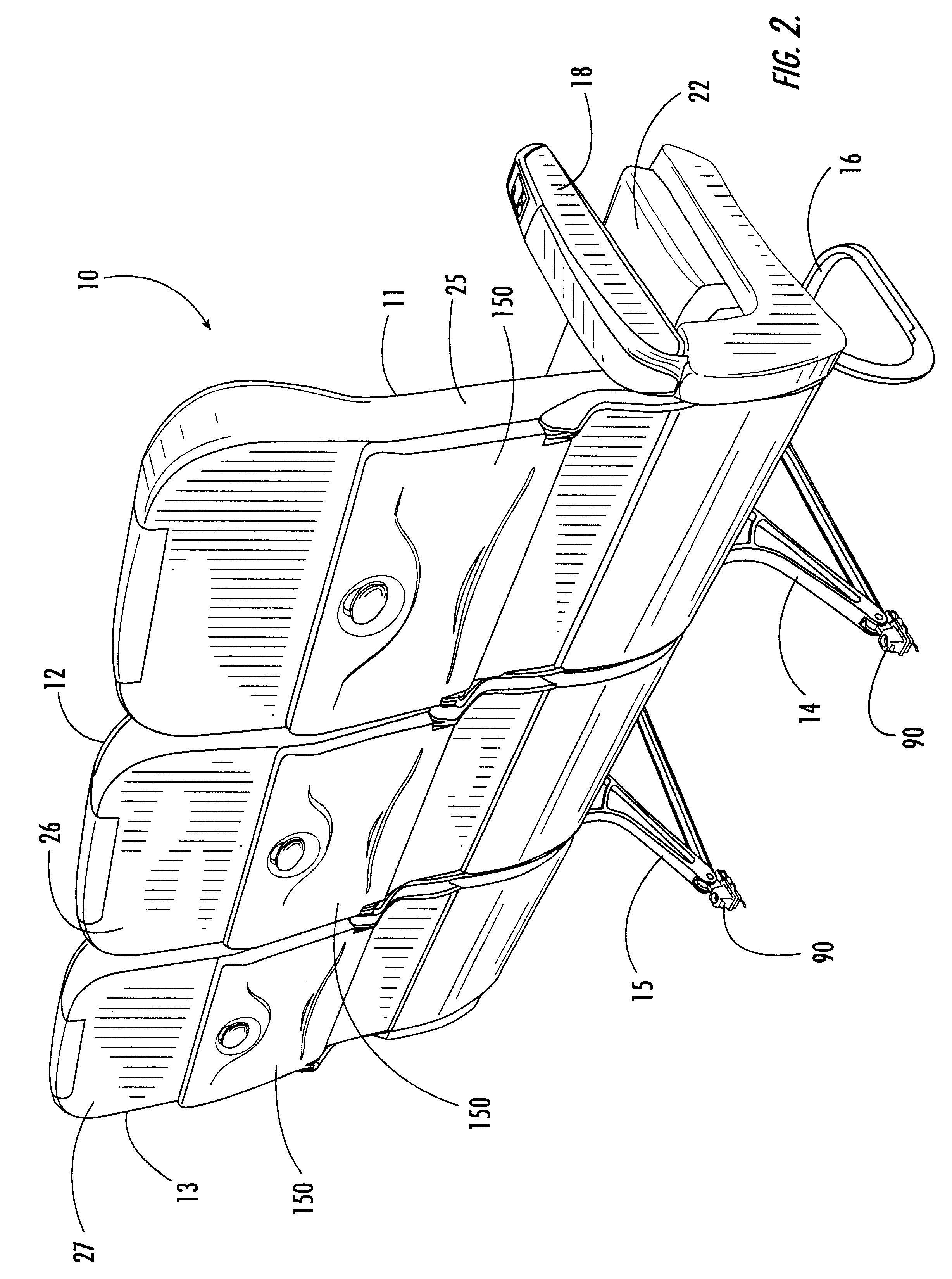Aircraft passenger seat frame construction
a passenger seat and frame technology, applied in the direction of seat arrangement, emergency apparatus, pedestrian/occupant safety arrangement, etc., can solve the problems of waste, prior art design waste, and inefficiency, and achieve the effect of reducing the diameter of the beam collar
- Summary
- Abstract
- Description
- Claims
- Application Information
AI Technical Summary
Benefits of technology
Problems solved by technology
Method used
Image
Examples
Embodiment Construction
Seat Assembly Overview
Referring now specifically to the drawings, an aircraft passenger seat set according to the present invention is illustrated in FIGS. 1, 2 and 3 and shown generally at reference numeral 10. In the particular embodiment shown in FIGS. 1, 2 and 3, the seat set 10 is comprised of three adjacent seats, an aisle seat 11, a center seat 12 and a window seat 13. The seat set 10 is supported on a pair of leg modules 14 and 15, and includes a baggage guard rail 16. The seats 11, 12 and 13 are provided with arm rests 18, 19, 20 and 21. The seats 11, 12 and 13 include seat bottoms 22, 23 and 24, respectively, and seat backs 25, 26 and 27, respectively.
The internal structure of the seat set is shown in FIG. 4, with various parts eliminated for clarity. As is shown, the seat set 10 is supported on and thus shares the two leg modules 14 and 15. The leg modules 14 and 15 carry a set of four laterally-extending beam elements 35, 36, 37 and 38 on which are mounted four section a...
PUM
 Login to View More
Login to View More Abstract
Description
Claims
Application Information
 Login to View More
Login to View More - R&D
- Intellectual Property
- Life Sciences
- Materials
- Tech Scout
- Unparalleled Data Quality
- Higher Quality Content
- 60% Fewer Hallucinations
Browse by: Latest US Patents, China's latest patents, Technical Efficacy Thesaurus, Application Domain, Technology Topic, Popular Technical Reports.
© 2025 PatSnap. All rights reserved.Legal|Privacy policy|Modern Slavery Act Transparency Statement|Sitemap|About US| Contact US: help@patsnap.com



